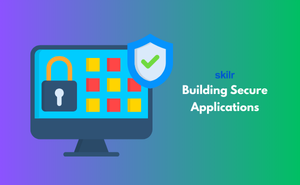👇 CELEBRATE CLOUD SECURITY DAY 👇
00
HOURS
00
MINUTES
00
SECONDS

Creating secure applications is about designing software that defends against cyberattacks and data breaches. As technology grows, so do threats, making it critical for businesses to embed security into their apps from the start. Security helps keep customer data private and ensures businesses avoid costly breaches.
The approach to secure development includes writing strong code, applying encryption, validating inputs, and testing systems for vulnerabilities. A secure application doesn’t just function well — it also protects users and businesses from digital risks. From online shopping apps to mobile banking, secure software plays a central role in everyday life.
This exam is ideal for:
Industry-endorsed certificates to strengthen your career profile.
Start learning immediately with digital materials, no delays.
Practice until you’re fully confident, at no additional charge.
Study anytime, anywhere, on laptop, tablet, or smartphone.
Courses and practice exams developed by qualified professionals.
Support available round the clock whenever you need help.
Easy-to-follow content with practice exams and assessments.
Join a global community of professionals advancing their skills.
Yes, secure DevOps (DevSecOps) is a major focus area for companies.
Yes, candidates learn fundamentals of testing and vulnerability scanning.
Yes, cloud security and best practices are part of the training.
SQL injection, XSS, data leaks, authentication bypass, and more.
Only basic coding knowledge is required; security concepts are explained clearly.
Finance, healthcare, e-commerce, telecom, and cloud services.
Yes, both web and mobile security practices are included.
Developers, security engineers, and IT professionals interested in secure software design.
No, basic programming and IT knowledge are enough to begin.
It protects sensitive data and prevents costly cyberattacks.